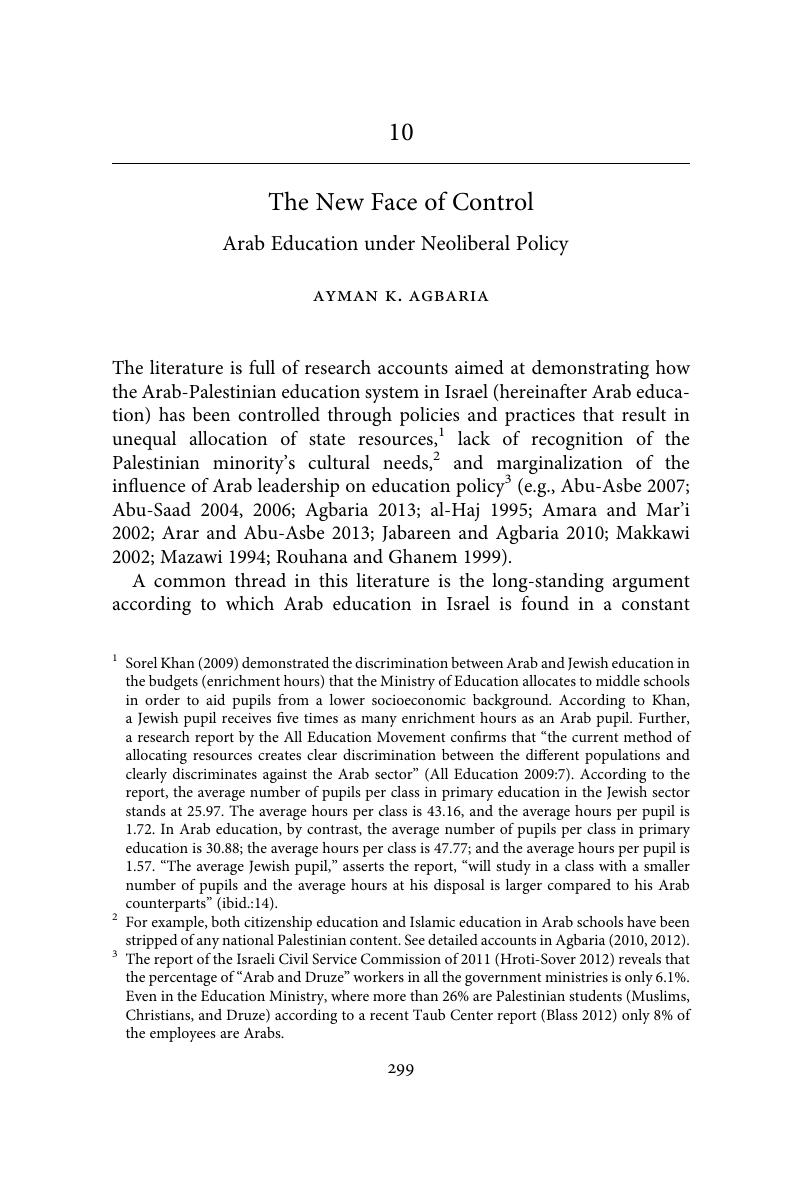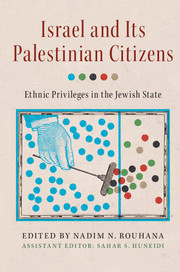Book contents
- Israel and Its Palestinian Citizens
- Israel and Its Palestinian Citizens
- Copyright page
- Contents
- Tables
- Contributors
- Preface
- Introduction
- 6 Mechanisms of Governmentality and Constructing Hollow Citizenship
- 7 The Legal Structures of Subordination
- 8 Controlling Land and Demography in Israel
- 9 Israel’s “Arab Economy”
- 10 The New Face of Control
- 11 Settler Colonialism, Surveillance, and Fear
- Index
- References
10 - The New Face of Control
Arab Education under Neoliberal Policy
from Part II
Published online by Cambridge University Press: 16 February 2017
- Israel and Its Palestinian Citizens
- Israel and Its Palestinian Citizens
- Copyright page
- Contents
- Tables
- Contributors
- Preface
- Introduction
- 6 Mechanisms of Governmentality and Constructing Hollow Citizenship
- 7 The Legal Structures of Subordination
- 8 Controlling Land and Demography in Israel
- 9 Israel’s “Arab Economy”
- 10 The New Face of Control
- 11 Settler Colonialism, Surveillance, and Fear
- Index
- References
Summary

- Type
- Chapter
- Information
- Israel and its Palestinian CitizensEthnic Privileges in the Jewish State, pp. 299 - 335Publisher: Cambridge University PressPrint publication year: 2017
References
- 12
- Cited by



